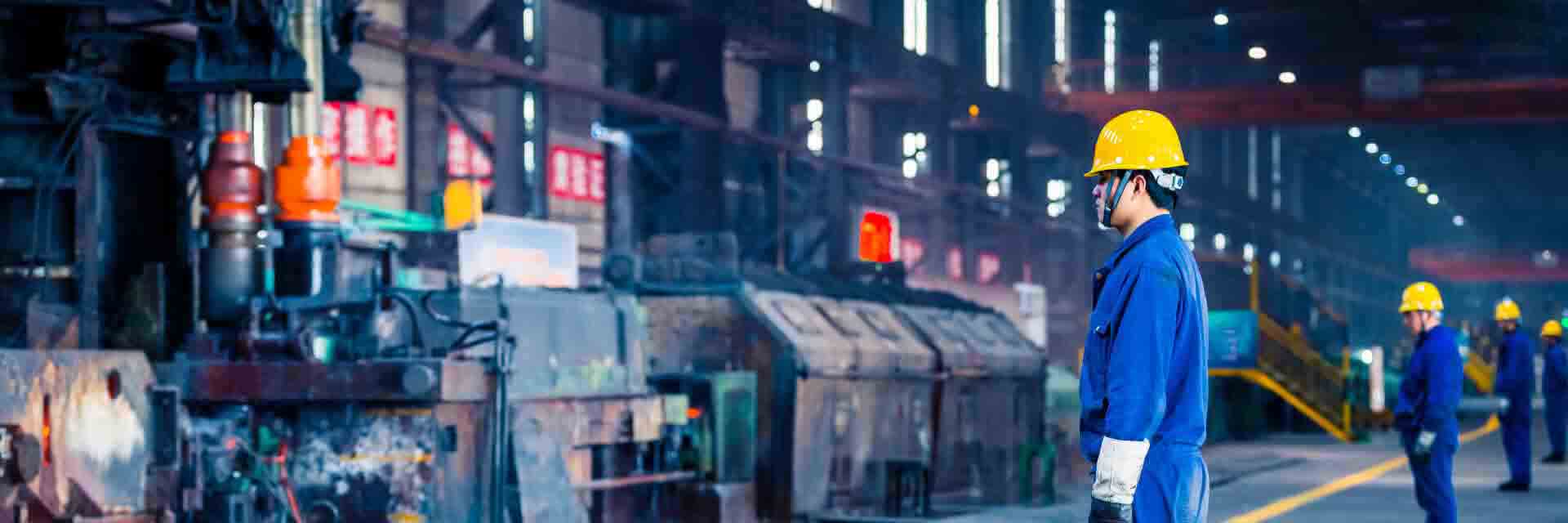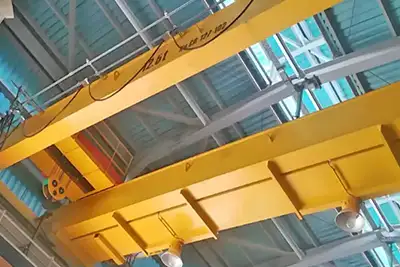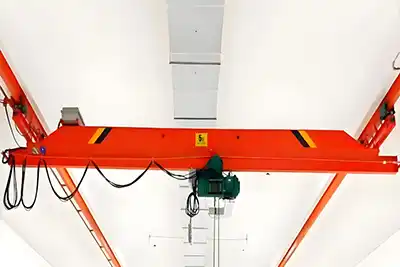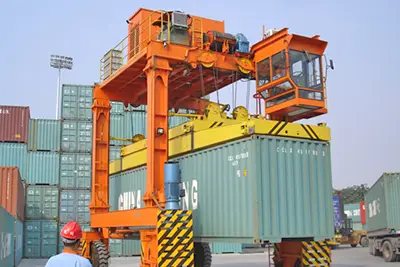Single Hook vs Double Hook Cranes Comparison Guide
Single Hook vs. Double Hook Overhead Cranes: Choosing the Right Crane for Your Evolving Lifting Needs
Introduction
Selecting the right overhead crane isn’t always straightforward. The choice you make affects your operation’s efficiency, safety, and budget.
This guide is aimed at buyers who are either new to overhead cranes or facing complex lifting challenges. Whether you’re dealing with mixed loads or planning facility upgrades, it’s important to know your options.
Understanding the key differences between single hook and double hook cranes will help you improve productivity, enhance safety, and manage costs effectively.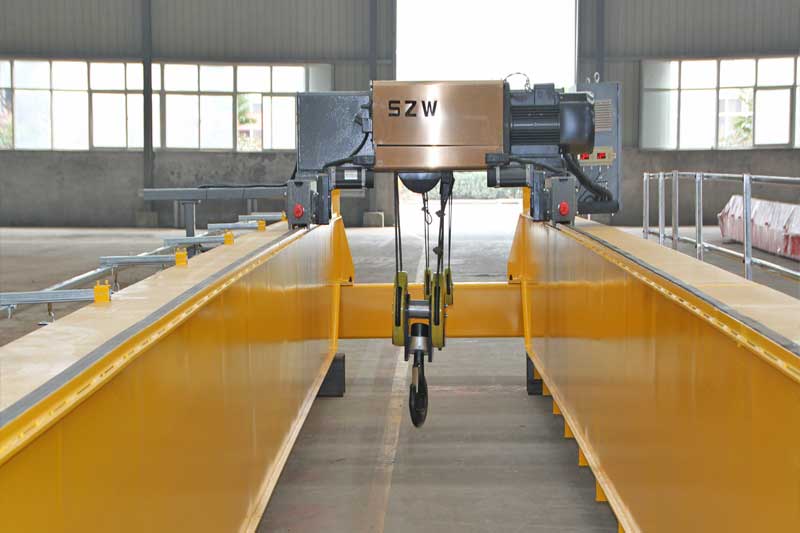
double girder overhead crane with single hook
What Is a Single Hook Overhead Crane?
A single hook overhead crane is the most common type of crane you’ll find in many industries. It features one main hoist with a single hook used to lift and move loads.
Typical Use Cases:
- Handling uniform or single loads where only one lifting point is needed.
- Common in workshops, warehouses, and manufacturing plants where tasks are straightforward.
- Ideal for lifting heavy parts, equipment, or materials that don’t require multiple load points.
Advantages:
- Simple design means easier operation and maintenance.
- Generally lower purchase and upkeep costs compared to more complex crane types.
- Less mechanical complexity reduces downtime and repair needs.
Industries & Applications:
- Metal fabrication shops
- Automotive manufacturing
- General warehousing and storage
- Small to medium-sized production lines
In short, single hook cranes are perfect when you need reliable, straightforward lifting without extra bells and whistles.
Key Comparison Factors
Choosing between single hook and double hook cranes depends on several practical factors. Here’s a breakdown to help you understand which fits your needs best:
Load Handling Needs
- Single Hook: Works well for uniform loads or tasks requiring only one lifting point.
- Double Hook: Shines when you need to handle mixed loads or lift two items simultaneously, boosting efficiency.
Operational Flexibility
- Single Hook: Simple to operate, easy for basic lifting jobs.
- Double Hook: Lets operators multitask—switch between heavy and light loads quickly, cutting down wait times.
Space & Installation Considerations
- Single Hook: Requires less space and simpler runway designs, making it easier to fit in tight workshops.
- Double Hook: Might need more complex installation, but it saves floor space by combining multiple lifting functions into one crane.
Cost & Maintenance
- Single Hook: Usually cheaper upfront and easier to maintain due to simpler mechanics.
- Double Hook: Higher initial investment, but increased productivity can reduce cost per lift over time.
Future Expansion & Scalability
- Single Hook: Best for steady operations with predictable lifting needs.
- Double Hook: Ideal for businesses planning to grow or needing flexible lifting options to handle varying loads.
These factors will help you figure out which crane type aligns better with your current and future operations.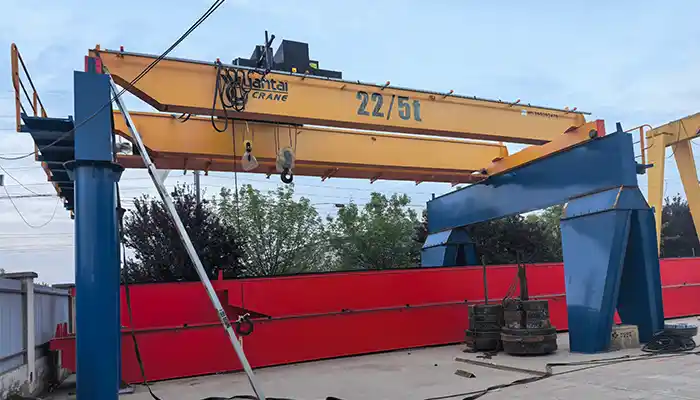
22 / 5 ton overhead crane double hook for sale Philippines
When Is a Double Hook Crane the Better Choice?
A double hook crane offers clear advantages in specific scenarios. Consider these key points:
- Complex or Mixed Load Handling
Ideal for operations managing various load sizes at once, like steel mills, fabrication shops, and warehouses. It allows simultaneous lifting of heavy and lighter loads, reducing the need to switch equipment. - Precise Load Positioning Needs
Enables handling heavy lifts while accurately positioning smaller or delicate items, improving efficiency and safety in tasks requiring fine control. - Future Expansion or Upgrades
Provides flexibility for facilities expecting changes in workload or complexity, supporting evolving operational demands without costly replacements. - Limited Space Situations
Perfect for environments with restricted floor or overhead space, where combining dual lifting functions into one crane reduces congestion and improves workflow.
If your operations involve any of these challenges, a double hook crane is often the better fit. It enhances productivity, saves time, and supports long-term growth.
Practical Tips for Making the Decision
Choosing between a single hook and a double hook crane isn’t just about specs—it’s about your real-world needs. Here are some tips to help you make the right call:
- Evaluate Your Loads
Take a close look at the types and sizes of materials you lift now, and what you expect to handle down the line. If you regularly juggle both heavy and lighter items, a double hook setup can save you time and hassle. - Consider Your Workflow
Think about how often you might need to lift two loads at once or switch quickly between different tasks. If your operation runs complex sequences or multitasking is common, a double hook crane offers more flexibility. - Balance Budget and Productivity
It’s tempting to go for the cheaper option, but weigh upfront costs against what you gain in efficiency. Sometimes spending a bit more on a double hook crane pays off in smoother operations and less downtime. - Talk to the Experts
Don’t hesitate to reach out to crane manufacturers or suppliers with experience in your industry. They can offer tailored advice, helping you find a solution that fits your specific site and lifting demands.
Conclusion
When it comes to choosing between a single hook and a double hook overhead crane, there’s no one-size-fits-all answer. Each has its strengths depending on your specific lifting needs and operational setup.
- Single hook cranes work well for straightforward, repetitive lifting tasks with uniform loads. They’re simpler and usually less expensive upfront.
- Double hook cranes shine when your operation involves mixed load sizes, simultaneous lifts, or requires precise positioning. They bring added flexibility and can support future growth or more complex workflows.
It’s important not to focus only on the initial cost. Think about how the crane will fit into your day-to-day work and how it can grow with your business over time. Investing wisely in the right crane can improve productivity and safety, reducing headaches down the road.
If you’re unsure which crane type suits your operation best, reaching out to experienced crane suppliers or manufacturers can make all the difference. They can offer tailored advice and help you select the crane system that meets your unique requirements.
Feel free to contact us anytime—we’re here to guide you through the process and ensure you get the best crane for your needs.

